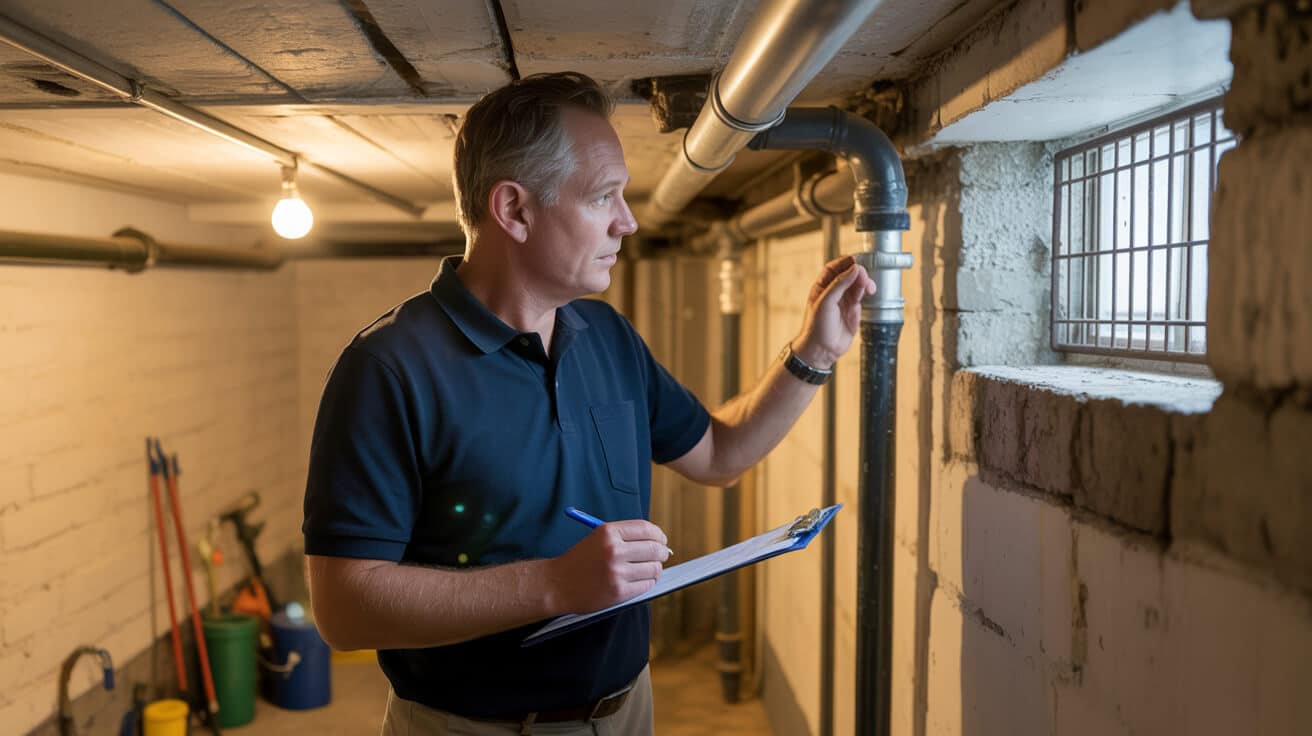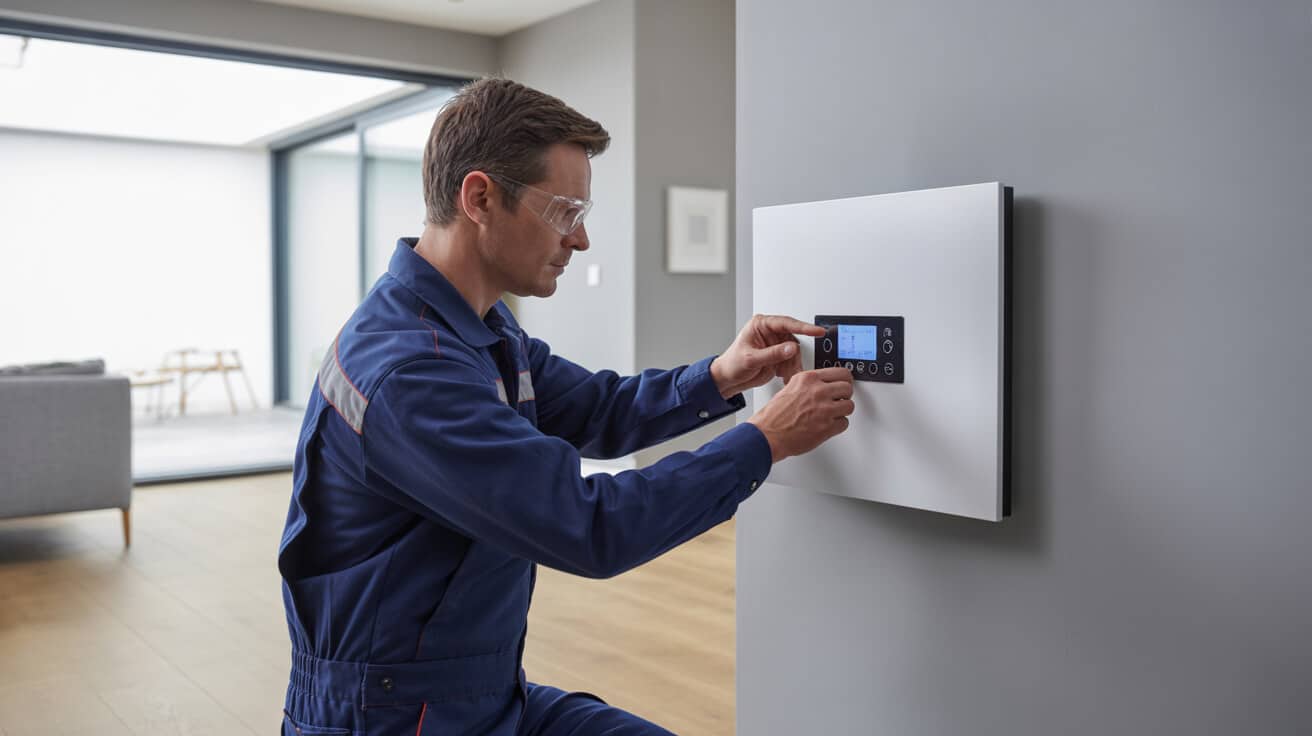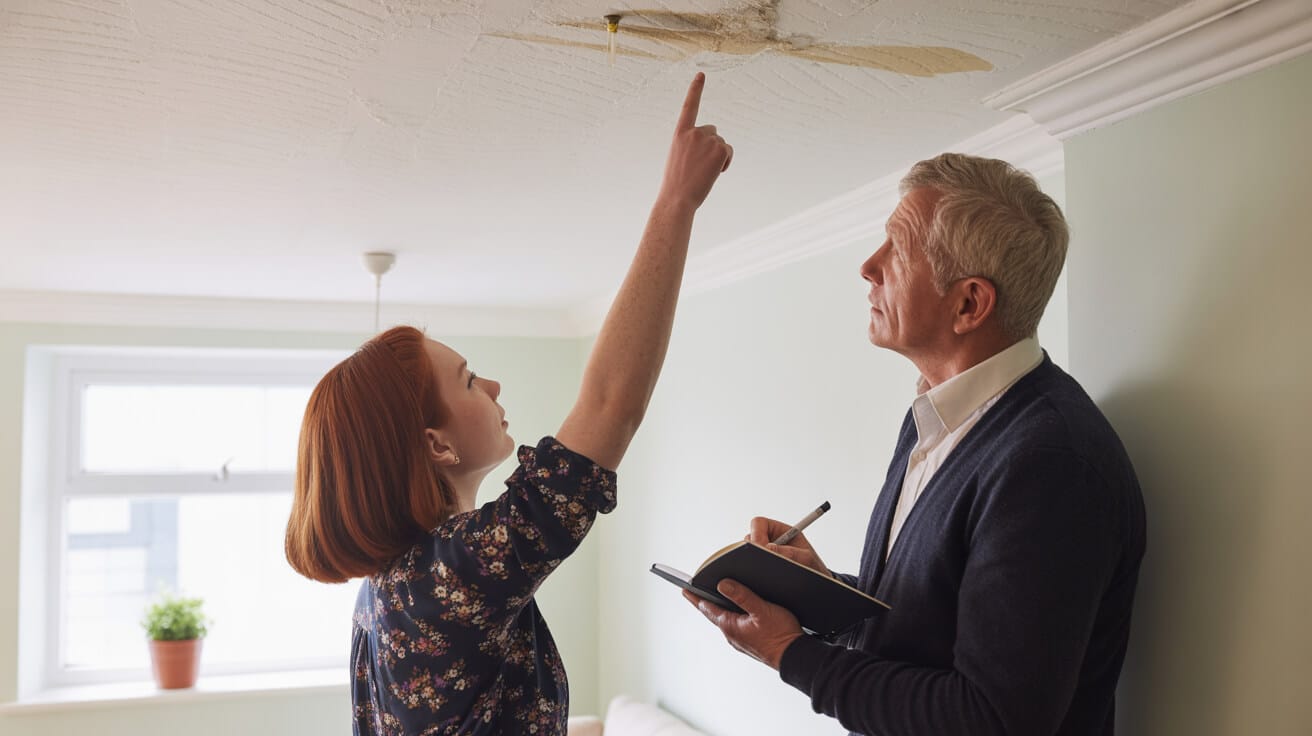 Understanding Your Boiler Controls and Settings
Understanding Your Boiler Controls and Settings

Where Are Hidden Boiler Control Mistakes Draining Value From UK Properties—And Who Pays the Price?
Every property manager, landlord, and homeowner wants heating that “just works”—but most never realise how control errors cost them far more than the visible bill. The overlooked dial, the missed log entry, or that timer stuck on last month’s routine quietly accumulates hidden losses. It’s an avoidable drain—eroding energy ratings, shaking tenant trust, and risking compliance breaches that can’t be waived away with a quick phone call.
It’s rarely a burst or breakdown that does the most damage—it’s the slow bleed of quietly missed settings, year after year.
It’s not only about gas bills. Studies from the Energy Saving Trust show that poorly set controls, out-of-date scheduling, and unrecorded thermostat tweaks typically waste between £100 and £200 a year per home, but landlords and agents risk additional penalties in fines, lost insurance claims, and stress when something goes wrong (Energy Saving Trust 2023). For multi-home portfolios and commercial managers, the numbers instantly multiply—not just in pounds, but in hours responding to preventable failures or angry tenants.
Missed compliance steps hurt harder: the wrong pressure after a part swap or letting a G3 unvented cylinder certificate lapse can torpedo claims after a leak, or leave you exposed during an inspection. More insidiously, every undocumented “favour” by an engineer or caretaker that goes outside the correct logbook steps is a ticking liability for landlords, managers, and letting agents—because inspectors, insurers, and tenants value proof over promises.
If your approach to heating is still “set and forget,” you’re handing over control—not just of warmth or spending, but of compliance, security, and reputation.
What Are Your Boiler Control Duties—And How Do Mistakes Trigger Legal, Financial, or Trust Risks?

Owning, managing, or living in a property doesn’t just mean “the heating comes on.” Every role carries practical and legal responsibilities—from how you use the timer on a cold morning, to how evidence and settings are handled at handover or following an emergency.
Homeowners are the first line. Miss a timer adjustment, let TRVs go unbalanced, or ignore routine servicing and even your warranty and insurance protections start to erode. A neatly kept log, up-to-date certificates, and scheduled servicing not only keep your costs sensible, but become vital if there’s ever a dispute or event.
Landlords face tighter rules—annual Gas Safe (CP12) and G3 (unvented cylinder) certificates are non-negotiable, as are clear, documented handovers, instant evidence production, and fast, record-backed repairs. A single delay, a missing form, or a poorly handled engineer visit can snowball into fines upwards of £2,000 and, worse, the loss of credibility with insurers and tenants.
Tenants are expected to know the basics—not to meddle with boiler pressure or hardware, but to report drops in comfort or error messages swiftly, and never manipulate controls beyond their user guide. Timely reporting means issues get logged and fixed in a compliant way, stopping small problems turning into system-wide headaches.
Agents and block managers carry the heaviest admin—overseeing documentation, communicating checks, and proving compliance at portfolio scale. A skipped log share, an ambiguous handover, or a missing certificate can mean insurance lapses, fines across dozens of homes, or even legal action at audit.
Compare the Compliance Landmines By Role
A duty snapshot helps clarify where slipping up often lands property stakeholders in trouble—whether it’s an owner ignoring logs, a landlord missing certificates, tenants pushing controls too far, or agents letting grey zones linger.
| Stakeholder | Vital Controls & Checks | Compliance Risk Point | Efficiency Gain Within Reach |
|---|---|---|---|
| Homeowner | Timers, thermostats, TRVs, logs | Warranty expiry, EPC slip | Smart scheduling, flow tuning |
| Landlord | Service, docs, handover | Gas Safe, G3, MEES, insurance lapse | Reminders, evidence storage |
| Tenant | Timers, stats, basic TRV | Faults not reported, tampering | Understand settings, alert |
| Agent/Manager | Schedules, records, handover | Void cover, batch fines, audit fail | Log tracking, checklists |
Treat your controls and logs as your most valuable keys. Lose their discipline, and costs multiply—while audit evidence vanishes at the worst moment.
Why Do Small Boiler Control Errors Grow Out of Hand—Even in “Well-Run” Properties?

It’s the “tiny” steps skipped—the pressure left a bit low, a timer never fully reset after a trades visit, a part swapped without the log updated—that become major weaknesses under stress.
Modern heating systems balance efficiency, safety, and compliance with a web of interacting settings and requirements. One unchecked box ripples through:
- Thermo-war: When radiator TRVs and the main wall stat compete (TRV on 5, wall stat at 19°C), the system runs in circles, burning energy and wearing out components twice as fast.
- Timer traps: After a power cut or a daylight savings change, schedules can shift—leading to chilly mornings or wasteful overnight running. Multiply that by how many properties you oversee, and preventable complaints skyrocket.
- Pressure slip: Over-topping a sealed system (above 2 bar cold) quietly weakens seals and pipes, causes safety lockouts, and sets warranty-denying conditions no insurer will argue.
- Missing legal steps: A single missed Gas Safe (CP12) or G3 certificate, or an unsigned engineer’s log, triggers everything from instant fines to tenants left with no claim after an incident.
Heating issues almost never start with a defective boiler—they begin with unnoticed settings. A dial set wrong today is an emergency call tomorrow.
In multi-property settings, one undocumented tweak or missing entry ricochets—turning an isolated mistake into a failed block-wide audit. And if it’s your name on the deeds or contract, the cost always boomerangs back to you.
Which Boiler Control Settings Carry Legal and Insurance Risks—And Where Do Most Owners Slip Up?

The same controls that deliver comfort—temperature, pressure, and automated schedules—are those that, if wrongly set or missed in the logbook, can void cover instantly. The line between “safe” and “at risk” is thinner than most realise.
Key Boiler Settings—Safe Ranges and Risk Triggers
| Setting | Safe Range / Standard | Key Risk and Standard |
|---|---|---|
| Boiler Temp | 60–75°C (winter) | WRAS, G3, EPC, burn risk |
| Hot Water Temp | ≥60°C at tank/stat | G3, Legionella L8, scald risk |
| System Pressure | 1–1.5 bar cold | Warranty, WRAS, benchmark |
| TRVs | 1–3 in use, rest off | EPC, overrun, insurer flags |
| Service/Docs | Signed yearly, 5 year keep | Gas Safe, landlord law, MEES |
Wander outside the band—pressure dropping below 1 bar or nudging above 2 when cold, for example—and breakdowns are just around the corner. Set the hot water below 60°C (without TMV protection), and you risk Legionella and legal claims. Let docs or logs get separated from settings, and you’ll struggle to prove compliance in any scenario—a deadweight if repairs become contentious.
Every adjustment, every visit, every handover must be signed and stored. Digital folders, cloud backup, or paper—but always traceable.
Your settings and your compliance evidence must match—when they don’t, insurance and warranties evaporate in a heartbeat.
How Can You Adjust Boiler and Heating Controls Safely—Without Risking Callouts or Compliance?

Adjusting your settings needn’t demand an engineer every time—but there’s a right, safe way, even for basic tasks. Miss a step, and you’re building future breakdowns or breaching compliance without realising.
Safety-First Adjustment Routine
- Isolate the Power: Always cut power at the fused spur before removing covers or touching wiring—never attempt internal resets or swaps unless you’re a certified engineer.
- Stick to Official Controls: Use the visible panel or approved app for scheduling. The “Boost” button gets you by in a pinch—not as a replacement for proper programming.
- Stay in the Safe Band: Set combi boilers to 60°C for winter, adjust only within what the manufacturer allows. For cylinder-based systems, hot water stats must be 60°C+—never lower for safety, never above 70°C for longevity.
- Pressure Top-Ups: After bleeding radiators or servicing, restore to 1.2–1.5 bar cold only. Overshooting 2 bar cold damages internal valves, causes leaks, and nullifies policies.
- Monitor After Every Adjustment: A safe tweak is always followed by a one-cycle test—look and listen for cold spots, unusual noises, or error flashes. Fast detection = fewer surprises.
- Insist on Certified Parts: Only instal WRAS-approved parts. It’s not simply “best practice”—it’s required for UK insurance and flood risk.
- Document Every Change: Log the adjustment—who, what, why—and update the file or service record. For managed portfolios, this is a non-negotiable audit requirement.
If in doubt, or if adjusting anything “beyond digital,” don’t gamble—book a qualified (G3, Gas Safe, WaterSafe) engineer from Plumbers 4U.
What Fast-Track Troubleshooting Steps Fix the Most Common Boiler and Control Faults?

Most heating emergencies begin as simple control issues. With the right flowchart, a surprising number are solved on the spot—saving hours, callout costs, and stress, for you and those you’re responsible for.
Cold Radiators, Working Boiler
- Check wall thermostat is set above room temp—and has “clicked.”
- Ensure TRVs on affected radiators match the heating plan for that space.
- Pressure above 1 bar after any bleeding? If so, cold spots point to sludge or airlocks—call for power flushing or professional bleeding.
Boiler Showing Error / Frequent Resets
- Have timer settings slipped after a power cut or engineer revisit?
- Pressure band still in the green zone? (1–1.5 bar cold—too low or too high risks trip-out.)
- Wall stat or TRV conflicts confuse smart controls. Reset and synchronise settings—test a cycle.
Loss of Hot Water
- Timer/programmer off by an hour? Double-check after mains power returns.
- Hot water stat—or cylinder thermostat—dipped below 60°C?
- Heating spur accidentally switched at the wall? If “no power,” check all isolators.
Pressure Loss Keeps Returning
- Look for wet patches near pipe joints or from the copper blow-off outside—the PRV could be dripping.
- An expansion vessel out of charge can cause chronic low pressure—a job for the service team, especially in older or heavily-used systems.
Most crises resolve by reading your panel, checking against safe settings, and knowing when to pick up the phone—guessing rarely pays.
Set staff and tenants clear “don’t touch” boundaries: pressure, drainage, and internal resets are off-limits to all but qualified engineers.
How Can You Make Boiler Controls and Documentation Bulletproof—for Insurance, Compliance, and Peace of Mind?

Protecting your investment, relationships, or rental reputation isn’t only about fixing things when they fail. It’s about discipline now—every setting, every part, every log.
- Keep Pressure Simple: Only fill to a cold 1.2–1.5 bar. Never touch 2 bar—repeat offenders lose insurance cover, and often end up with leaks far costlier than a single callout.
- Parts: WRAS or Bust: Demand certified valves and parts. Your insurer and WaterSafe status both ride on it. Fit anything else, and you risk a denied claim and a legal fight.
- Double-Check Every Log: Engineer visit? Log the date, stat settings, and every tweak—don’t trust memory. For agency clients, cloud backup keeps everyone in sync across handovers.
- No Manual Resets Without Just Cause: “Just flicking it back on” after an error usually wipes helpful error logs and can breach warranty rules.
- Store Docs Where They’re Needed: Onsite folder, digital cloud, or portfolio dashboard—logbooks and certificates close at hand are your shield throughout an audit or claim.
Plumbers 4U clients get cloud-stored logs on every visit, cheat-sheets for tenant handover, and WRAS, G3, Gas Safe paperwork ready for any authority or insurer.
What’s a Stepwise Routine That Keeps Your Heating System Safe, Efficient, and Legal—Year After Year?

Consistency is the quiet champion of safe, efficient heating. A rigorous, repeatable routine is the line between reliable comfort and unexpected disaster.
Reliable Boiler & Controls Routine
- Isolate power at the fused spur before doing anything but timer tweaks.
- Review and record every control setting—digital or dial.
- For combis, 60°C flow is the gold standard.
- For cylinders, 60°C stat, no less; flow side at 65–75°C (for winter).
- Check pressure any time you or a trade touches the system.
- Only top up just above 1 bar—never two.
- Synchronise controls: TRVs off in rooms where main stats rule.
- Dual control in one room causes “ghost running” and cold spots elsewhere.
- Scan for error codes or warning lights, using Plumbers 4U’s code card.
- Fit only WRAS, G3, or Gas Safe approved parts—document as you fit.
- Test every hot tap and radiator after work, log performance notes.
Miss a step, and systems drift off-spec. Do it right, and you sidestep 95% of headaches, preserve compliance, and cut insurance risk to near zero.
Block managers and multi-site landlords: Syndicate your logs across cloud dashboards, and lock in checks at annual and five-year intervals—your audit trail then becomes your greatest asset.
Can Getting Your Controls Right Actually Build Trust, Compliance, and Everyday Comfort—for Owners and Occupiers?
It’s not just about heating bills—mastering your Boiler controls earns you credibility, better tenants, and easier sleep during inspections and emergencies alike.
Homeowners dodge last-minute panics, overspend, and “lost log” claim failures when every setting and log matches the standard. Your home stays “sale ready” with an unbroken paper trail.
Tenants who know their settings report minor faults earlier, avoid accidental damage, and become allies in keeping your system healthy—all earning your trust and, in lettings, your permission to stay on.
Landlords, agents, and property managers can prove diligence, transparency, and safety long after staff changes, with audits, claims, and legal events passing smoothly every year.
- Plumbers 4U is accredited for WRAS, WaterSafe, G3, and Gas Safe. Every action, setting, and log entry is tied back to strict regulation, never just “usual practice.”
- “Cheat-sheet” guides are left on site—with photos, part labels, and setting notes—for every new tenant or caretaker.
- Tenants or staff with urgent questions can text photos direct to our engineers for remote triage and advice. Less downtime, more clarity, and no guesswork.
- Service visits come with signed logbooks and instant PDF copies for your digital files.
- Major upgrades? Every job—retrofit, smart control, Part L compliance—is specified to meet future regulation, not just today’s inspection.
- Owners, agents, or managers: Your readiness and reliability set the gold standard for how your business or building is seen.
Protect trust like you protect warmth: through steady action, logged evidence, and clear, confident support.
Get a Personalised Boiler Controls Support Pack—From a Plumbers 4U Engineer Who Makes It Simple
If you want to prevent small control mistakes from turning into major headache or cost, act early: Request your free settings quick-guide, or just snap a clear photo of your controls and forward it to Plumbers 4U for an expert check and bespoke advice.
Every call, every visit, and every log is engineered for reliability—so you get compliant comfort, smooth audits, and true confidence when it counts. From homeowner to agent, landlord to caretaker: Plumbers 4U delivers settings, paperwork, and care as if it were our own place—every time, down to the last detail.
Frequently Asked Questions
Why do overlooked boiler control habits drain budgets and risk legal flags for UK property owners?
Skipping over minor boiler timer, pressure, and thermostat checks quietly climbs into four-figure annual costs and exposes properties, from single flats to block portfolios, to compliance breaches that only show up when auditors or insurers come calling. More than half of UK audit failures in 2023 cited “incomplete service records” or “mismatched settings with usage logs,” according to industry watchdog reports, and a survey of managing agents found that 68% of rejected insurance claims involved gaps in digital boiler documentation.
It’s rarely the breakdown that does the damage—it’s the paperwork or setting missed months beforehand.
The danger isn’t always a cold/radiator or a burst pipe—it’s the slow decay of unlogged adjustments: timer drift after a power cut, radiators left throttled in winter, pressure gauge creeping below 1.0 bar when no one is looking. For homeowners, a missed control check can void your warranty right when you need it most. For landlords, incomplete logs or an expired annual certificate (CP12 or G3) brings not just fines but potential tenant claims for “statutory nuisance”—a status now flagged by several councils using digital audit trails.
How do subtle oversights aggregate cost and compliance risk?
- Timer misalignment post-power outage can burn an extra £120 a year in wasted heating.
- Letting a pressure gauge slide under 1.0 bar for weeks often results in denied heating warranty claims.
- Failing to document a thermostat or TRV setting tweak can leave even pristine repairs off the insurance radar.
- Not providing digital audit trails means local authorities or EPC assessors will classify even “fixed” properties as at-risk, resulting in additional compliance scrutiny.
A consistent routine—making control checks as routine as locking up for the night—creates the most affordable, audit-proof property. Plumbers 4U equips every client with tailored digital logbooks and seasonal audit reminders, closing the gap between confidence and compliance.
What’s the real difference between owner, landlord, tenant, and agent boiler control duties—and where do roles blur into risk?
Each property persona faces its own pressure points on boiler control compliance, but confusion over boundaries remains the root of most costly missteps.
Homeowners shoulder full responsibility: every missed annual service, undocumented control tweak, or replacement part without traceability can trigger voided warranties and slower claims. Landlords and letting agents must publish an unbroken chain of compliance—from CP12s or G3 for unvented cylinders to logbooks linking every boiler and radiator setting to a dated check, or face fines. Tenants have defined limits—timers and TRVs only, with any pressure loss or error code flagged to the property controller or approved engineer. Managing agents act as compliance quarterbacks: miss one digital log or certificate handover and whole portfolios risk regulatory censure and claims bottlenecks.
| User Group | You Are Accountable For | Common Pitfall | Resilient Fix |
|---|---|---|---|
| Homeowner | Service logs, settings, parts | Unlogged part or setting tweak | Seasonal checklist, cloud log |
| Landlord | Docs, upgrades, tenant conduct | Missed cert or older recordkeeping | Integrated digital compliance suite |
| Tenant | Timers, TRVs, rapid reporting | “DIY fix” on pressure/hardware | Limit access, prompt reporting |
| Agent/Manager | Portfolio-wide settings, audits | Untracked service/tenant change | Automated logging, role split in docs |
The most efficient handover or audit is the one where every party knows their line—and there’s a record to prove it.
When lines blur—like a tenant topping up pressure or a landlord swapping a TRV valve without documentation—everyone loses: claims stall or fail, surprise fines emerge, and tenant comfort plummets. Want your next audit smooth? Pair every property action with a digital log and keep tenant, owner, and agent roles sharp and documented.
Which boiler settings carry legal punch, and what UK-safe control parameters prevent penalties and health risks?
Not every control dial is just about comfort—some are hardwired into UK water, health, and energy law. Getting these settings wrong isn’t just a performance hiccup; it can void insurance, trigger council action, or even put vulnerable tenants at risk.
- Boiler/flow temp: Legal safe zone is 60°C–75°C. Underheating below 60°C, especially in multi-user setups, carries Legionella risk and G3 audit flags.
- Hot water cylinder/stat: Always ≥ 60°C, unless a thermostatic mixing valve (TMV) proves a lower outlet temp. Anything below triggers L8 Legionella liability and rental claim risk.
- System pressure: 1.0–1.5 bar (cold). Drop below? Expect breakdowns and denied warranty; exceed 2 bar and relief valves will vent by design—potentially unnoticed.
- TRVs: If left partially closed in the room with the wall thermostat, your boiler overworks and the EPC assessor marks energy non-compliance.
- Service log and documentation: Digital, timestamped proof needed for all settings, service events, and repairs for five years per property—now standard with almost all insurers and most local authorities.
| Setting/Priority | UK-Compliant Range | Failing This Breaks… |
|---|---|---|
| Boiler temp | 60–75°C | WRAS, G3, EPC, warranty, claims |
| Hot water stat | ≥ 60°C (or TMV proof) | Legionella L8, G3, tenant law |
| Pressure | 1–1.5 bar (cold, idle) | Supplier/insurer, safety, comfort |
| TRVs/stat rooms | Fully open in stat rooms | Energy rating, EPC, audit |
| Logbooks/docs | Dated, digital (5yr min) | All compliance, insurance, audit |
Safe is a setting, compliance is a log, and savings appear when both are routine.
Those who test, set, and prove every adjustment sleep best—whether they control a single flat or a fifty-unit rental.
How can you run a compliant boiler control routine—no expertise or guesswork required?
Staying legal, saving energy, and avoiding repair surprises doesn’t mean being a heating expert. You just need a clear routine and a reliable, role-matched checklist.
- Power isolation: Before going beyond a timer, turn off with fused spur/switch; it’s safety 101 and a G3/WRAS requirement.
- Control review: Confirm all heating controls (timer, wall stat, TRVs) are set for current season and occupancy—no “leftover” holiday schedules.
- Temperature: Set combis to 60°C and cylinders 65–70°C for robust comfort and audit safety.
- Pressure check: Confirm cold read is 1.0–1.5 bar; quick top-up if needed, with a note in the log every time.
- TRV check: Ensure main thermostat room radiators are fully open—prevents wasted energy and EPC downgrades.
- Run/test: Fire up all heating zones and taps, check for odd error codes or warning lights.
- Log update: Record all changes, fixes, or anomalies—best in a cloud logbook, but paper with a photo is a great backup.
A three-minute check-in does more for your budget and compliance than most engineer callouts.
No part of this needs a plumber—only touch hardware internals or cylinder panels when licenced. But keep a ready line to Plumbers 4U if you spot unresolved codes, swings in pressure, or system oddities; proof and prompt repair now beats penalty and downtime later.
Which steps actually solve everyday boiler control issues—and when should you call a pro?
Most boiler and heating system glitches—the ones that scare tenants and puzzle new agents—can be resolved with practical, safe checks before reaching for the phone. But knowing when to stop and call for certified help is half the battle.
Cold radiators, working boiler:
- Confirm the main stat clicks “on” above room temperature.
- Check all radiator TRVs, ensuring open in stat rooms; all others can be set per comfort.
- Bleed system if rads remain cold; always check pressure (aim: 1.2 bar after) and re-top up, logging each change.
- No progress? Persistent cold spots can mean sludge or an airlock. Don’t keep cycling—engineer required (especially for multi-property).
Odd error codes or random system resets:
- After a power loss, reverify timer and stat schedules match real use—not just “boost” or “override.”
- Is pressure reading under 1.0 bar or climbing above 2.0? Single, logged top-up only; repeats call for an engineer to check for leaks or PRV venting.
- Persistently mismatched room stat and TRVs means system logic is fighting itself—level all controls, run test, and update your log.
No hot water?
- For cylinders, check the stat/programme; must be ≥ 60°C or TMV fitted and tested.
- Panel not lighting? Only check fuses if you’re very familiar with electrical safety.
Dropping pressure?
- Look for leaks or drips at the pressure relief outlet (usually outside)—persistently falling pressure normally means expansion vessel or an insidious leak; repeated boosting can void cover.
Tenant role:
Stick strictly to timer and TRV tweaks; never open panels or touch pressure. Report, don’t attempt, any safety fix.
Landlord and agent protocol:
Issue every tenant a “boiler basics” card and run per-property log updates after routine visits; restrict unsanctioned settings access for safety and claim speed.
Each Plumbers 4U callout finishes with fixes plus full compliance and log update—proving every step of your control routine.
How do you structure bulletproof audit logs and documentation—so claims never get stuck and compliance is never in question?
Every compliance audit or insurance claim stands or falls on one foundation: traceable, legible, time-stamped logs documenting every settings change, service, and fix. Digital systems and photo evidence now power more than half of all successful claim approvals—particularly for landlords, agents, and multi-unit blocks.
- Annual service logs: Must include engineer’s name, time, digital signature, and a compliance check (ideally cloud-stored for loss avoidance).
- Event-based logging: Every power cut, reset, bleeding, or pressure tweak—log the what, why, when, and who. Consistency is the new gold standard.
- Part and control traceability: Only WRAS/WaterSafe-approved parts; record every replacement (batch and type), whether for a rented flat or private home.
- Don’t erase error codes or historical logs: Record “before and after” for faults or repairs.
- Make logs accessible: Tenants should have summary cards; landlords and agency managers need cloud logins or PDF portfolios.
An up-to-date log isn’t just a safety net—it’s proof that powers your comfort, claims, and compliance.
Every Plumbers 4U visit means your logs, parts, and certificates are traceable, timestamped, and always ready for insurer, tenant, or council. This is audit resilience built in from day one.
Which routine powers truly safe, efficient, and regulation-proof boiler control for every role—owner, agent, or tenant?
Compliance, comfort, and efficiency are repeatable miracles born of simple, shared routines—not expensive hardware or intermittent attention.
Universal “gold standard” control routine:
1. Isolate power (for non-timer changes).
2. Review all controls: working timer, open TRVs in stat rooms, schedules aligned for season and use.
3. Check settings: 60–75°C (boiler), ≥ 60°C (cylinder), and pressure steady at 1–1.5 bar.
4. Test after every change: Run heating/zones/taps, catch lingering issues before they snowball.
5. Update logs instantly: Paper or cloud, every change. Attach a photo or timestamp if possible.
6. Sync with seasons and events: After clock changes or outages, reconfirm all settings—shift routines as needed.
7. Audit by role:
- *Homeowners:* Monthly check.
- *Landlords/agents:* Biannual full sweep per property.
- *Tenants:* Follow “Boiler Basics” guide, report—never repair.
Simplicity scales: a three-minute routine pays off in smooth audits, faster claims, and year-round tenant satisfaction.
Plumbers 4U makes this standard automatic: every visit, every guide, every certificate cements compliance and confidence—so you’re never caught off-guard, whether facing an insurer, a tenant, or a service audit.



